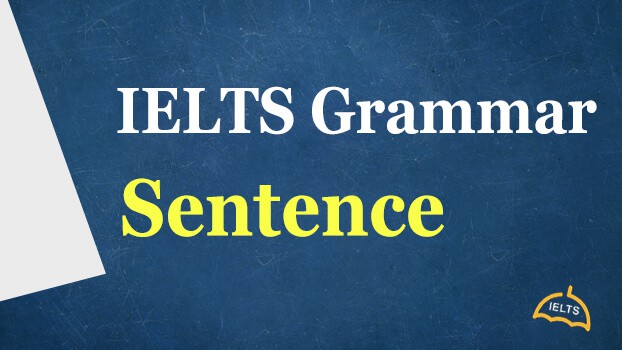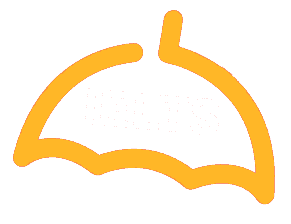IELTS Grammar Sentence Structure
This article is going to discuss one of the major scoring parameters of IELTS, especially IELTS Writing and IELTS Speaking, sentence structure.
IELTS, as a test of English, closely scrutinizes the test takers grammar and an important parameter is known as Sentential range or putting it simply, a range of sentence structure that one can use and should use to score better in the IELTS Writing and Speaking sections. Before going on to explain the different sentence structures, let us understand what a sentence is.
One important component of scoring in IELTS Grammar Sentence structure is by Writing and Speaking the Sentential range or putting it simply, a range of sentence structure that one can use. Before going on to explain the different sentence structure, let us understand what a sentence is.

IELTS Grammar Sentence Structure.
What Is A Sentence?
For a sentence to be a sentence, it needs to fulfil three basic criteria:
1. It has to be a group of words.
2. It has to give complete meaning
3. It has to be of the SVO order.
Let us look into each in detail.
1. It Has To Be A Group Of Words.
A sentence is always made up of a group of words.
For example,
My exam is on the 26th of April.
I am hungry.
Columbus discovered America.
If you look at all the above examples, each one is made of more than one word.It makes IELTS Grammar Sentence Structure easy.
2. It Has To Give Complete Meaning
A group of words is considered a sentence only when it gives complete meaning. If you look at the above examples, all the sentences carry a form of complete meaning, so unless your sentence is giving complete meaning, keep writing.
The sentences below
- I could not give the book
- The Major, who fought in World War 2
- In the corner
A close look at the sentences will tell you that all of the above sentences give out some idea, but needs to contain more information in order to be shelling out complete meaning. For instance, in sentence (a) who is the subject giving the book to? What about the Major who fought in World War 2 in (b) and what is in the corner? All of the sentences above require extra information to make complete sense and thus cannot be called a sentence.
A sentence needs to carry a complete meaning. Now one might argue that a simple word like ‘Sleep’ is complete in its meaning. Yes, it is, but note that ‘Sleep’ when simply put followed by a. like ‘Sleep.’ is a command and not a sentence.
Pushing further, the group of words like ‘in the corner’ adheres to the first criteria, gives you some sense, but not complete sense and thus cannot be considered as IELTS Grammar Sentence Structure.
3. It Has To Be Of The SVO Order.
All English sentences are of the order- SVO. What do I mean by this? All sentences in English start with a subject- S, followed by a verb – V and finally an object- O.
For example,
The sun rises in the east.
Red is my favourite colour.
Donald Trump is the president of the United States of America
In all of the above sentences, ‘the sun’, ’red’, and ’Donald Trump’ are the subjects of the sentences, in the sense that, they are the topic of the sentences. Each of the subjects are followed by doing verbs, otherwise called as ‘verbs’. The verbs are followed by ‘objects’ which give information about the subject.
Note: Questions in English are not of this order and will be discussed in a separate article. Sentences can sometimes get rid of Objects, when the Subject and Verb can independently form complete meaning.
Now that we know what a sentence is and is not, let us look into the different kinds of sentences. There are three kinds of sentences in English IELTS Grammar Sentence Structure:
1. Simple Sentence
The structure of a simple sentence, as the name suggests is simple: SVO. For example,
He went to get fish from the market.
Proficiency in English is a must for IELTS.
My mother and father own a house in Delhi.
All of the above sentences carry either one word or one phrase as a subject, a verb and an object.
2. Compound Sentence
In linguistics or chemistry, compounding stands for joining or combining, and as the name suggests, a compound sentence is a sentence which is made up of two or more sentences.
The structure of a compound sentence is SVO+SVO.
For example,
a. I went to the market and he went to the bank.
b. My mother cooks in the morning and then goes to work.
In the above example (a), “I went to work” is the first sentence and “he went to the bank” is the second sentence and both are combined together with the help of a conjunction, ‘and’.
In the sentence (b), “My mother cooks in the morning” is the first sentence and “goes to work” is the second sentence wherein the subject of the second sentence ‘she’ is implied from (a).
So the structure of (a) is SVO+SVO and the structure of (b) is SVO+VO. The + sign is to be replaced by a conjunction.
A few examples of conjunctions are:
And, but, because, therefore, nevertheless, or, neither-nor, hence, since, etc.
3. Complex Sentence
As the name suggests, complex sentences are pretty complex in nature. Before we go into the details of a complex sentence, let us understand what a ‘clause’ is.
A clause is a group of words that has the structure of a sentence (SVO), but does not make complete sense. So the conditions 1 and 3 of being a sentence is fulfilled, but not 2. For example, in the sentence given below
Ramesh, who is a good painter, is coming to town today.
Ramesh= Subject
Is coming= Verb
To town today= Object.
When written “Ramesh is coming to town today” is a complete sentence on its own. However, the part “who is a good painter” without a question mark (?) does not make IELTS Grammar Sentence Structure.
“who is a good painter” is a perfect example of a clause where ‘who’ is the subject, ‘is’ is the verb and ‘a good painter’ is the object, but however, does not have a complete meaning and thus, cannot be a sentence. It needs the subject Ramesh to form meaning and thus, is dependant on the subject of the main sentence.
The insertion of a dependent clause within a sentence makes it a complex sentence. The structure of the above sentence is SsvoVO.
Similarly, complex sentences can also be formed having a structure SVOsvo.
For example,
Ramesh is coming to Delhi today which is the capital of India.
In the above sentence, “Ramesh is coming to Delhi today” is one sentence (SVO) and “which is the capital of India” is another SVO but does not carry full meaning and thus is a clause.
Some other examples of complex sentences are
The map illustrates the town of Queensland, which is situated in the western coast of North America, is densely populated.
A certain section of people who believe in child marriage think that it is a sign of prosperity to get their children married at a very young age.
It is to be noted that the possible structures of complex sentences are arranged in an order wherein, the subordinate or dependent clause functions as an adjunct, otherwise known as optional descriptive information, describing either the subject of the sentence or the object.
Why is it important to know or implement these kinds of sentences in IELTS Writing or IELTS Speaking?
IELTS Writing is scored on the basis of Spelling, Punctuation, Vocabulary, Coherence, Organization and Grammar (Tense and Sentential range), while IELTS Speaking is scored on Fluency, Vocabulary, Pronunciation and Grammar (Tense and Sentential range).
To sum up, it is very important to exhibit these variations in terms of IELTS grammar sentence structure to score 8+ in IELTS. So the next time you practice speaking or writing, please experiment with sentences to get comfortable with each.
Looking for a score above 7 in your IELTS Test? Enrol for our IELTS video course that has helped people to score high in IELTS

